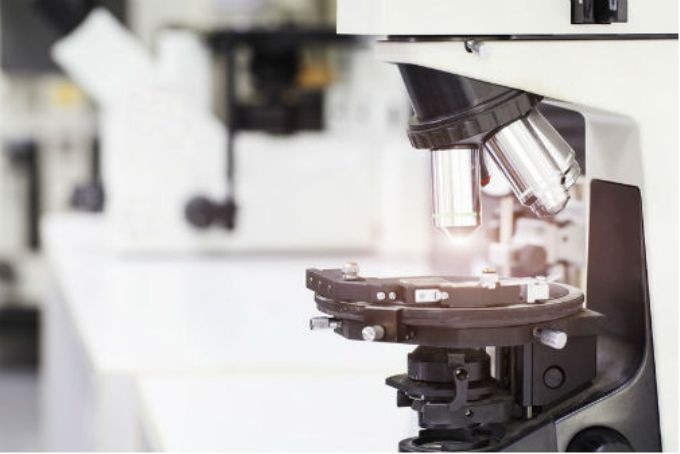Dec 12 2018
Researchers at the University of York have formulated a new method that makes use of light to learn how cells communicate in human disease.
 An oscillating light on a sensor helps scientists see individual cells under a microscope and how they behave. (Image credit: York University)
An oscillating light on a sensor helps scientists see individual cells under a microscope and how they behave. (Image credit: York University)
All cells in the human body communicate with each other by discharging signaling molecules; this helps to guarantee that tissues work normally, that the immune system is able to react to infection, and that cell division and survival are controlled to prevent cells mutating, such as in cancer.
The new method utilizes a sensor device that makes a light go to and fro on the surface of the sensor; the vacillating light helps sense and quantify the secretion of signaling molecules from individual cells to understand how the cell’s behavior alters over time.
Millions of cells
Currently scientists have to look at thousands or even millions of cells in one mass to understand how they communicate, but in order to detect any malfunctions, experts have to be able to see what is going on at the individual cell level. This is what we set out to do using a light-based technology to get at what is happening in each cell simultaneously.
Dr José Juan-Colás, Department of Physics and Electronic Engineering, University of York.
Now that researchers can observe serious changes at the individual cell level, it becomes easier to detect the beginning of diseases such as cancer, or the development of blood clots for instance, where early detection is paramount to improve survival rates.
Mutations
Professor Ian Hitchcock, from the University of York’s Department Biology, said: “Many diseases start with a mutation in a single cell, but existing tests are limited at being able to drill down to this level.
“By investigating these mutations in a single cell, using this new technique, we can start to look at answering important questions as to how changes at the single cell level lead to disease in an entire tissue; and, critically, what we can do to prevent it.”
The new method can already be used on live human cells and the team is currently involved in further developing the technology towards clinical applications.
Step-closer
We are now a step closer to understanding how cells and their signalling molecules work to regulate human disease. The long-term aim is to develop this technique for use in clinical settings to diagnose disease earlier and potentially to help drug development companies avoid unnecessary adverse drug reactions.
Professor Thomas Krauss, Department of Physics, University of York.